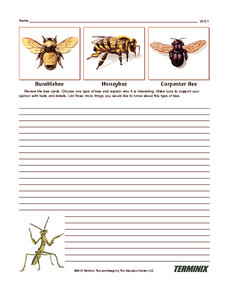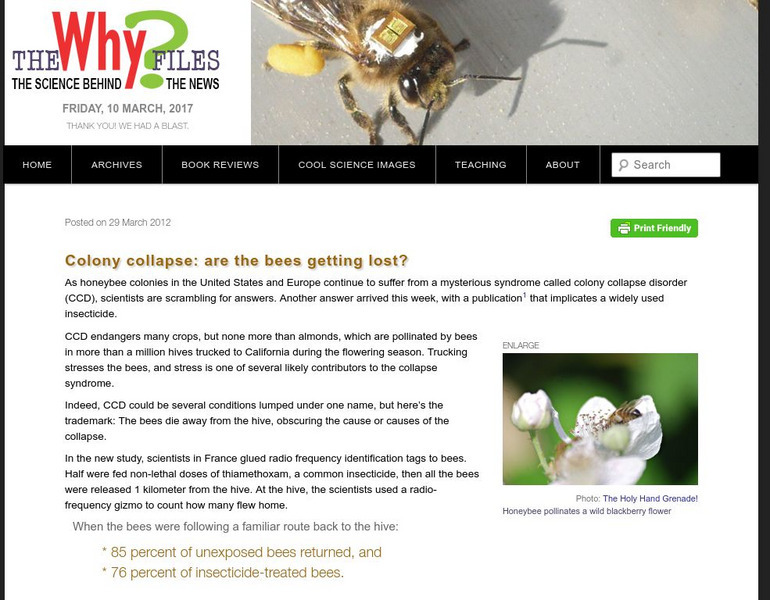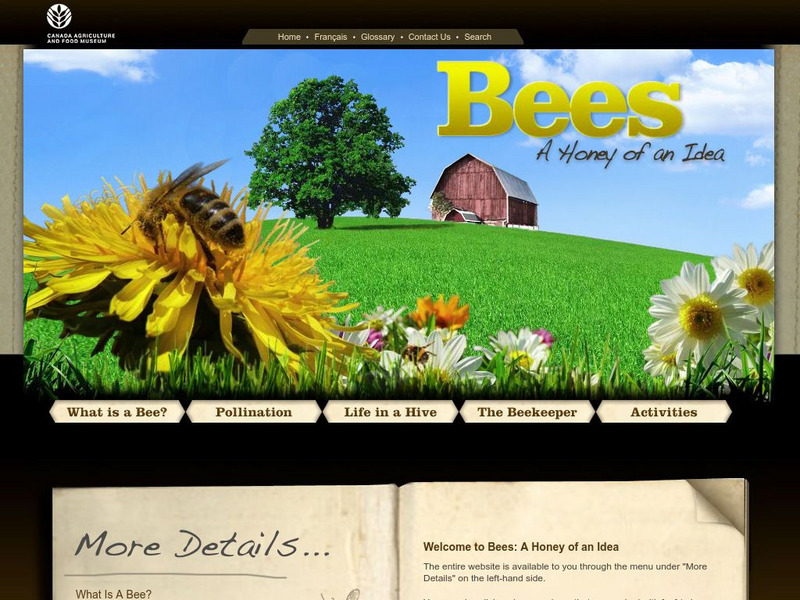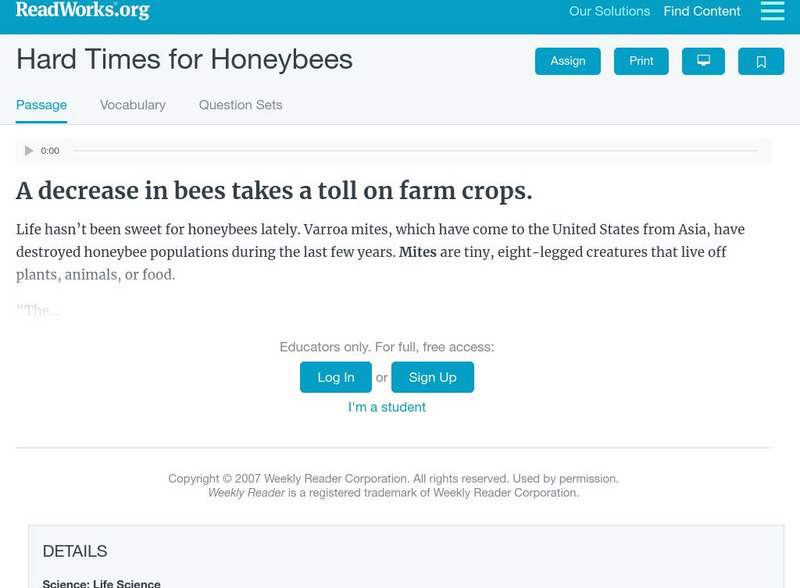The New York Times
Trouble in the Hive: Researching the Decimation of Honeybee Colonies
Teach your class about colony collapse disorder and foster discussion about causes and solutions for the honeybee problem. Class members read and discuss an article and participate in one of two detailed activities about pollination and...
Terminix
Bee Writing Prompt
What do your pupils know about bees? Ask them to examine facts and images about three different types of bees and write about one type. Pupils explain why their chosen bee is interesting and back up their ideas with facts and opinions....
Curated OER
Buzzing Bee's Wardrobe
Students investigate the anatomy of honeybees. In this anatomy lesson, students research the physical characteristics of bees and discover what they do. Students create a model of a honeybee showing the correct anatomy.
Curated OER
The Honeybee Life Cycle
In this the honeybee life cycle worksheet, 3rd graders study the diagram of 6 stages in a honeybee's life, then fill in 3 short answer questions.
Curated OER
Honeybee
Students investigate honeybees and the importance of honeybees to humans. They identify the various parts of a bee's body using velcro parts, role-play a hive, and answer review questions.
TED Talks
Ted: Ted Ed: The Hidden Beauty of Pollination
Pollination is a vital to life on Earth but largely unseen by the human eye. Filmmaker Louie Schwartzberg shows us the intricate world of pollen and pollinators with gorgeous high-speed images from his film "Wings of Life," inspired by...
PBS
Pbs Nova: Tales From the Hive
Website that accompanies the NOVA program "Tales from the Hive." Site includes additional facts on bees, specifically the breakdown of a bee hive, and the different dances bees do as well as what they mean.
University of Wisconsin
The Why Files: Honeybees Getting Lost?
As colony collapse disorder continues to attack honeybee hives, a new study shows that a common insecticide interferes with their return flights.
PBS
Pbs Learning Media: Bee Navigation
This video segment from NOVA: "The Mystery of Animal Pathfinders" explores honeybee communication and navigation. [4:45]
Other
Canada Agriculture Museum: Bees: A Honey of an Idea
Learn about bees, from different types, pollination to the processes utilized to extract, package, and use honey and its by-products. Includes quick facts, recipes, craft ideas, and printable activities for students.
Cayuse Canyon
The Us50: Georgia
This site provides excellent information regarding Georgia's history, geography, state parks, and historic sites. A fact sheet of information and a quiz is also available.
Scientific American
Scientific American: The Buzz on Bees: In Depth Reports
Read this multimedia article about the disappearance of bee colonies worldwide. Find out why it is crucial to saving this important pollinator from extinction.
Read Works
Read Works: Hard Times for Honeybees
[Free Registration/Login Required] An informational text that asks the reader to make predictions about problems created by the decreasing bee population. A question sheet is available to help students build skills in reading comprehension.
Read Works
Read Works: Worldwide Loss of Bees a Growing Concern
[Free Registration/Login Required] An informational text about the decreasing number of bees and the negative effects that can have on our food supply. A question sheet is available to help students build skills in reading comprehension.
Illustrative Mathematics
Illustrative Mathematics: G Mg Hexagonal Pattern of Beehives
Beehives are made of walls, each of the same size, enclosing small hexagonal cells where honey and pollen are stored and bees are raised. This problem examines some of the mathematical advantages of the hexagonal tiling in a beehive....
BiologyWise
Biology Wise: Understanding Batesian Mimicry
Biological mimicry is a fascinating subject and Batesian mimicry does not disappoint. It occurs as a protective mechanism when one defenseless species mimics characteristics of a species that can harm or even poison a predator. Examples...
Canadian Museum of Nature
Canadian Museum of Nature: Bees
Bees are found all over the world and are vital for controlling other insect populations. Some basic facts about bees can be read here, and there are pictures as well.
Treehut
Suzy's World: Bees
Use this site to find out why bees make honey with this quick fact sheet on bees.
The BIG zoo
The Big Zoo: Honey Bee
Site provides some fascinating facts regarding these extremely important insects. Contains a physical; description, information regarding their diet, habitat, social structure, birth and offspring as well as senses.
Other
American Academy of Allergy, Asthma & Immunology: Stinging Insect Matching Game
Learn to recognize the difference between the different kinds of stinging insects in this matching game.
















